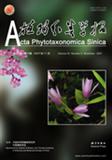PAN Xiao-Yun, GENG Yu-Peng, Alejandro SOSA, ZHANG Wen-Ju, LI Bo, CHEN Jia-Kuan,
In this review, we present a detailed account of Alternanthera philoxeroides (alligatorweed), including A. philoxeroides description, intraspecific variation from native to introduced regions, its life history strategies, invasion mechanisms, and management strategies. Alternanthera philoxeroides is a herbaceous amphibious weed of Amaranthaceae, native to South America, distributed from Buenos Aires Province (39° S) to south Brazil. It was first described by Martius in 1826, and consists of several taxa in both its native and non-native ranges. Current knowledge indicates that two forms of alligator weed exist in Argentina: A. philoxeroides f. philoxeroides in the southern range and A. philoxeroides f. angustifolia in the northern range. In Argentina, both forms set fruits and produce viable seeds. Alternanthera philoxeroides is now found as a serious weed from tropical to warm temperate regions, including the USA, China, India, South-East Asia, Australia and New Zealand. It is thought to have been brought to China during the 1930s, and later widely cultivated and spread in southern China as fodder during 1950s. The invasions of alligatorweed in China have caused considerable concerns, and now it is one of the 12 most harmful alien invasive species in China. Alligatorweed is found on stationary and slow moving water bodies, creeks, channels, riverbanks and associated areas that are occasionally flooded. It can also be found in terrestrial habitats as a pasture weed within urban environments. Alligatorweed does not produce viable seed in China and reproduces vegetatively from vegetative fragments (stems, rhizome or root tubes), which can be transported by water movement, boats, machinery and vehicles, and in hay. Movement between river catchments is common because of the human activities. Alligatorweed forms a floating mass which spreads out over the water. Its growth disrupts the ecology of banks and shallows and crowds out other plant species, restricts water flow, increases sedimentation, aggravates flooding, limits access and use by man and provides a favorable breeding area for disease vectors. We need better understanding of the biology and ecology of alligatorweed to assess the efficiency of control methods in any theoretical framework. According to the knowledge of the life history strategy of alligatorweed, we suggest that metapopulation theory is a good tool to improve management efficiency from watershed and regional perspectives.

